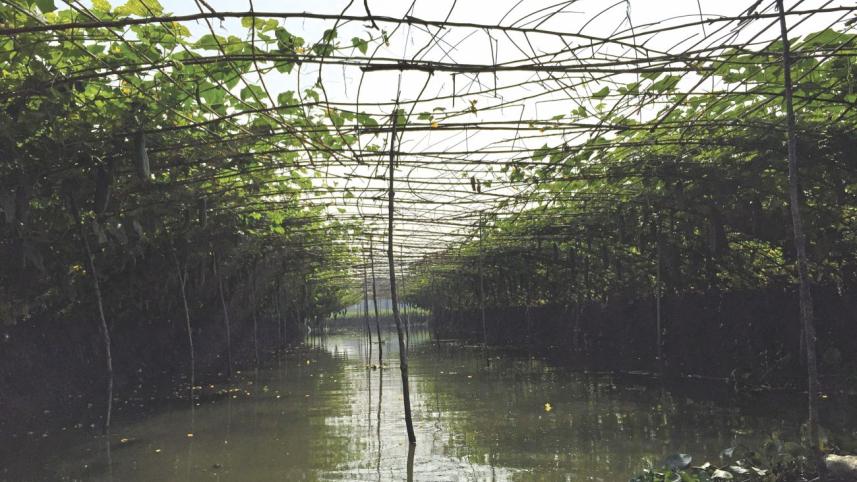The traditional agri tech now a UN recognised heritage

Each year during the monsoon months in Monohorpur village, of Pirojpur's Najirpur upazila, local farmers revisit the ways of ancestors. Vegetables are planted in floating garden beds, bringing unexpected productivity to waterlogged land.
Forefathers recognised that in order for an agrarian society to prosper in an environment surrounded by water it would be necessary to dedicate both waterlogged and drier land to agriculture.
The endemic hydroponics system thus invented has more recently been recognised by the United Nations Food and Agriculture Organisation as a globally important agricultural heritage system, noteworthy for its innovation, sustainability and adaptability.
"The technology of floating agriculture started in Monohorpur," says local journalist Moniruzzaman, "and has since spread across Bangladesh." In near locations like Beeldumuria, Deulbari, Dobra, Padmadubi and Gaokhali, floating agriculture continues through much of the year.
Dr. Md. Abu Taiyab from Chittagong University's geography and environmental studies department says the achievement of global heritage status has been the result of the combined efforts of farmers, the media, government and NGOs.
"The government has initiated a Tk 128 crores project on floating agriculture in order to spread the technology across more waterlogged areas," says an additional secretary of the agriculture ministry.
"We are working hand in hand with the government," says the Food and Agriculture Organisation representative in Bangladesh, Mike Robson.
"We want to ensure floating agriculture is implemented in areas where it is most suitable," he continues, "because in the many saline prone regions it won't work."
Robson underscores the need for Bangladesh to explore all its agriculture heritage, not only floating farms, in order to better serve the country's varying local conditions.
Nonetheless, in Monohorpur there can be no doubt that the past of floating farms is also the best future. "I spend around Tk 7 lakhs per year," says Oliullah, a farmer reliant on floating garden beds. "I can make a modest profit from this type of farming."
Later, during the dry season, the same farmers will rely on "kandi" ridge farming, with the drainage channels between ridges suitable for gourds hanging from bamboo scaffolds.




 For all latest news, follow The Daily Star's Google News channel.
For all latest news, follow The Daily Star's Google News channel.
Comments